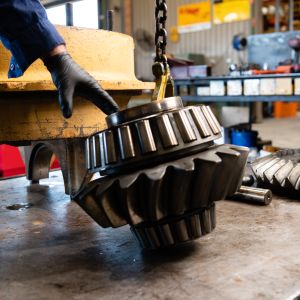Aren’t comparisons great? Depending on how you define your scope, you can learn so much from them. For instance, how is it that a lunch truck blowing a horn can drag 10-15 people together from within 500m in 30 seconds flat, but even for scheduled meetings, try to get 3 people together on time and they will be held up and you can almost guarantee having 5 minutes to yourself. As most meetings don’t even involve the attendees parting with money, maybe we need to re-think what meetings have to offer? And no, I wasn’t thinking cholesterol or mini-skirts.
There are other fascinating observations all around us too. During a recent trip to the USA, the variety of cars and models on the road compared to Australia was astounding. “A much bigger market” is probably the obvious reply, but again by using comparisons, that doesn’t explain the whole situation. Why is it that a mainstream imported (but not top of sales charts in either country) Volkswagen Passat TDI costs from $USD26,000 in USA and from $AUD49,000 in Australia? So as not to pick on one supplier, move up the scale to a Mercedes SL500, and it’s $AUD353,000 in Australia (of which $65,000 is luxury car tax), whilst the SL550 is $USD106,000 in USA. A price difference of more than 3 times! Total taxes in Australia account for 20-30%, but still leaves a significant difference. No wonder there is more variety on American roads, because a wider selection of vehicles fits within more people’s budgets.
The answer for the high prices in Australia is actually quite simple. It’s called an Overregulated market. Noting this discrepancy also with the UK market (with the steering wheel on the same side so it’s exactly the same car out of the same factory), a friend and I looked at bringing a used vehicle across to Australia. It’s virtually impossible. You need to get the manufacturer to sign off that the vehicle meets Australian standards. Why would they do that, as basically they are approving a competitor? So basically there is a cosy co-existence between bureaucrats making “unique” standards for vehicles to be sold here, whilst the manufacturers are happy for this also, as it keeps out so called “grey imports” and makes it hard for anyone other than a major player to bring in cars to Australia. The result: hugely overinflated prices and lack of variety. Bureaucratic Red tape at its best, and every Australian pays the price. As all imported cars are around the same in terms of price, it’s not just manufacturer price gouging. Australia is an expensive place to conduct business, which is why our Government is regularly being asked to prop up local manufacturing. Some might say our prices are high to protect our local vehicle manufacturers, but so does the USA. Another popular argument is usually that we have these standards to address safety concerns, however if we were serious about safety, all registered vehicles would be inspected by Government inspectors at least bi-annually (as happens in many developed countries), not just when changing hands. We should automatically accept any cars built to the high US, European or Japanese design and safety standards (that is, do away with unnecessary local requirements), and Australians would be able to afford to drive newer and safer cars. This would allow more makes and models, as well as more businesses to compete, leaving the Australian population better off. Surely the manufacturers would welcome moves to make it easier to bring vehicles into our country?
“Cut Red Tape” is a more and more common catch cry. The problem is, we think too small. It’s admirable that the new Qld Government will combine many of the documents related to property sales (and maybe cut a few pages and requirements out). Whilst a start, shouldn’t we think bigger? Or maybe I really meant think small, like a 1 page contract? But you get the point. Another instance was when I was talking to our Apprenticeship Centre, and was told that the Federal Government has just reviewed the contracts of the 4 providers, and they will be the only provider losing their contract. The last time this happened, Government transferred the administration process between employers and apprentices to one of the other remaining providers. Neither the employer, apprentice, nor Apprenticeship centre had any say in which provider looked after the existing contract, they were just transferred. Another cosy bureaucratic arrangement, and whilst our Governments talk about balancing a budget or cutting costs, we all know that this is exactly why we all hark up any time there is talk of increasing taxes when we have such wasteful systems in the first place. A true review would have thought bigger: it is the Training Centres and Employers that educate our next generation, why do we need any bureaucrats or businesses whose sole purpose it is to administer the transaction? The exact same situation exists in businesses built on “Return to Work” programs and our now “deregulated” electricity market (all it did was add a layer of businesses that purely administer the same electricity we already used) and goodness knows how many other “initiatives”. Talk about waste of resources and unnecessary red tape!
Looking at some other comparisons, four times more people die each year from digesting household chemicals than drown in pools. So why is the “less dangerous” one heavily regulated and burdening house holds with huge expenses, when the other isn’t? Is it because we can’t blame someone other than ourselves for the misfortune? Or is it because the media don’t find a picture of a cupboard as exciting and easy to write catchy headlines for?
Comparisons will be as positive and enlightening as you want to make them. I was fortunate enough to recently go on my first cruise ship, which also happened to be the largest cruise ship in the world. It’s amazing to observe the amount of planning required to design effectively a small city (it employs over 2,500 people and carries over 5,000 passengers) that is totally reliant on export revenue whilst importing all the production inputs. Despite space constraints, it didn’t feel crowded and there was hardly any waiting or delays anywhere on the myriad of activities, shows or restaurants. It amazes me how they can manage the logistics of for instance boarding all these people in about 1 hour through demountable customs buildings they take with them to each port. Or how the HR department recruits and trains 2,500 employees all on short term (about 6 month) contracts, whilst ensuring 5 star service levels and positive attitudes. How come our local cafés often struggle to get staff to give service with a smile? Whilst it wasn’t all smooth sailing (one engine room fire, but very well managed by the crew), it’s when we compare ourselves like this that we can really learn things when developing businesses and communities.
As always, onwards and upwards!
Fred Carlsson




